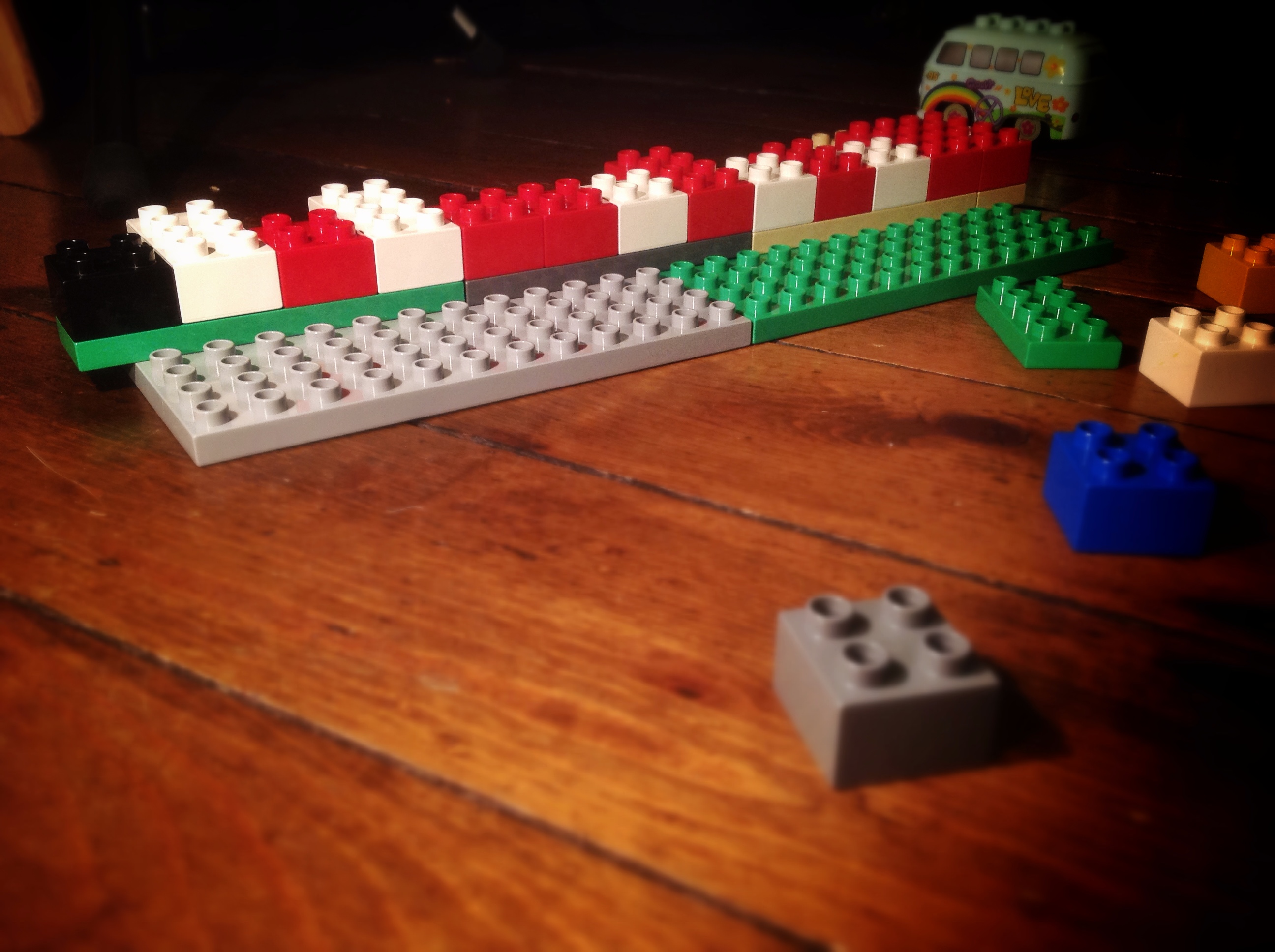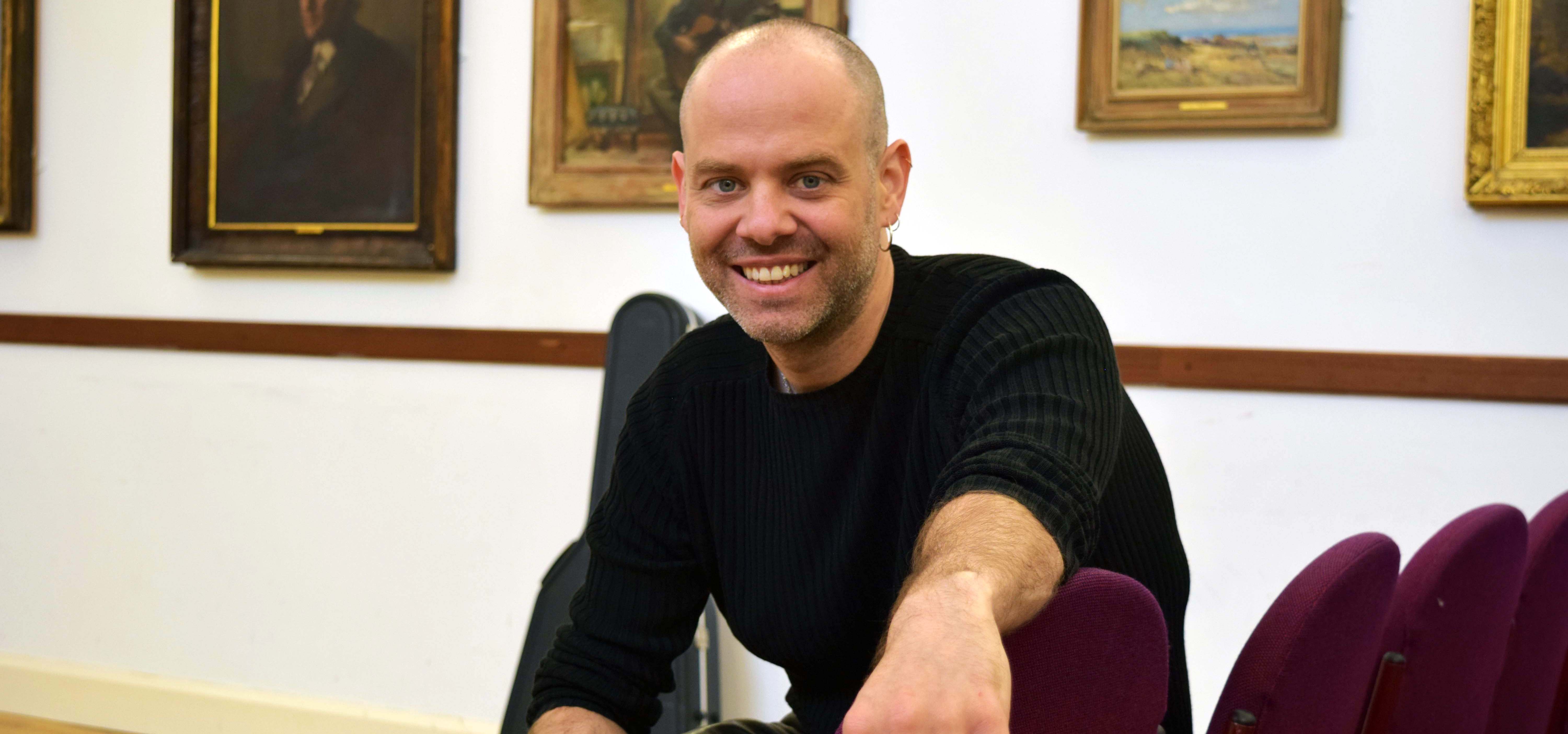
A Scale In Harmony
This lesson shows you how to stack thirds and create harmony on that old war horse
– the major scale.

A major scale is a series of notes with a very particular pattern of spaces, you only have to glance at the picture accompanying this post to see it clearly constructed with Lego bricks. Try playing that pattern across the A string starting on C. Note the pattern of space and no-space otherwise know as intervals.
Each one of the seven notes within the major scale can be built up into a chord, thus creating harmony.
How are chords are constructed? With the cycle of thirds.
What the hell is that, you ask?
Well take any starting note, lets say a C; count up and miss one, add the next note and continue in a cycle of three or triads. An alternative way to think of this is take your starting note and then use every note in an odd number sequence as you count up – 1 3 5 7 etc.

A basic chord only has a root, third and fifth however it is possible to continue stacking thirds thus creating more interesting chords; going from Jazz to Scriabin in seconds.
Now try playing that first one string C major scale again, up one string, and now add in the rest of the triad to create full chord shapes.
Notice that you only use three shapes on the fretboard, major, minor and half diminished.
As a side note: Its worth remembering that the major scale contains 3 major chords, 3 minor chords and only one half diminished; hence the Roman numerals underneath the scale, which are saying the same thing – just much more concisely.This knowledge will come in handy when creating your own pieces or arrangements or if you wish to tackle, say our Christmas Carol lesson.
As an alternative try playing that one string scale an octave up, so across the B string; find the triad notes above it now. They should look like the below example. Here the chords are inverted – no longer on the root note.

Below is a short excerpt, from an etude by Mauro Giuliani, to show how triads are used musically and idiomatically across the guitar.

It illustrates how he takes a chord up the fretboard, across strings 2, 3 & 4 and how he juxtaposes them against the open E string. I have left the right hand pattern in bar one but stripped it away from the rest to make his chords clearer. This idea is recognizable in many pieces, but most especially the middle section of Villa-Lobos‘s Prelude No. 4.




